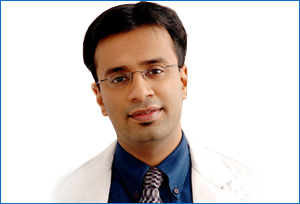Bazaar BEAUTY
One might argue that beauty is in the eye of the beholder, but social media believes otherwise. With pass-or-fail tests going viral, like the ‘Thigh Gap’ and ‘A4 Waist’ challenge, society has created unequivocal ideals of what is and is not considered beautiful, leaving very little room for anything in between. Using such black-and-white formulae to determine whether someone is good-looking may seem impractical, yet scientists continue to utilise ratios, equations, and proportions to quantify beauty. But can one’s attractiveness be validated by simple math?
Take for example, the ‘Finger-Trap Test’ that originated in China in 2014 and has been circulating the internet since. It claims to determine whether or not you’re attractive by simply placing your pointer finger on your nose and chin. If your lips do not touch your finger, you’re considered beautiful. If they do, then hopefully you have a great personality.
According to facial plastic surgeon and director of The Esthetic Clinic, Mumbai, Dr Debraj Shome, this ‘Finger Trap Test’—also known by its more tactless name, the ‘Beauty and Ugliness Identification Method’—is based on Rickett’s E-Line, which is used by cosmetic surgeons to create the ‘ideal’ profile in which the nose and chin are aligned. “If your lips touch your finger, it means there’s not enough protuberance of the chin, so you probably need a little bit of filler or something to help transform that part of the face,” explains Dr Shome.
This curt analysis seems rather elementary for such a convoluted topic. After all, the world consists of diverse ethnicities, each possessing their own ideals. While many seek a flawless complexion, communities in South Sudan practice scarification—lacerating the skin with a knife to create what they consider beautiful patterns of raised scar tissue. In Asian countries, where whitening creams dominate the market, fair skin is viewed as a sign of beauty and elevated social status. Yet, on the other side of the world, what is coveted is a golden, sunkissed glow.
Senior cosmetic and facial plastic surgeon Dr Thomas Mohan says, “The ‘Finger-Trap Test’ is too general to convey any real meaning. It does not take into account important parameters—such as symmetry or proportion—and as such, should not be used in isolation.”
So, where did this concept of symmetry and proportion resulting in beauty originate? Some argue that it began with evolution. In a National Geographic news article titled Symmetrical Bodies Are More Beautiful To Humans, author Ker Than suggests that balanced features indicate good health, resistance to disease, and the ability to produce genetically ideal offspring. And since ancient times, mathematical formulae have influenced scientists’ findings of what constitutes beauty. One such formula, Phi, tells us that 1:1.618 is the ideal proportion of two parts of any object, whether it be a flower or a human face. Many cosmetic surgeons reference this ‘Golden Ratio’—as it was later coined— when assessing their patients. For example, when measuring the length and width of the face, it is said that the length (when divided by the width) should equal 1.618. Which means, an ‘ideal’ face should be 1.5 times longer than it is wide.
Facial surgeons also utilise Phi for other proportions on the face. For instance, an ideal width for the lower lip should be 1.618 times that of the upper lip. “That’s important in a world where many are undergoing lip augmentation. If you make the upper lip wider than the lower lip, it’s always going to look unnatural,” notes Dr Shome.
We live in a beauty obsessed
digital age, in which the
pressure to constantly
present our best self—or
selfie—to the world is
exhausting and unrealistic
Although Phi remains a guideline when performing cosmetic surgery, the medical field has witnessed its share of transient beauty trends. “The general thought process has always been that a slightly upturned nose, specifically at 106 degrees, is more feminine,” says Dr Shome. “But now, noses that are given a rotated tip—think actresses like Jennifer Aniston and Drew Barrymore—are going out of fashion because they look artificial.”
Perhaps, this attributes to the former practice of using Caucasian noses as the standard model when performing rhinoplasty on patients of different ethnicities. “These tenets of an ideal female nose do not hold for Indians, or Africans, and Asians at that. Shaping ethnic noses into a typical Caucasian nose will make them look odd,” explains Dr Mohan, who has had to correct many of his patient’s surgeries conducted in the United States.
This understanding led to the development of ethnic rhinoplasty, in which the nose is surgically altered relative to the rest of the patient’s facial features in order to maintain their identity, thus demonstrating the importance of taking these mathematical guidelines with a grain of salt. We live in a beauty obsessed digital age, in which the pressure to constantly present our best self—or selfie—to the world is exhausting and unrealistic. We’ve conditioned ourselves to hide behind filters, and to seek affirmation of self-worth measured in double taps and followers.
Fashion photographer Rafique Sayed says, “Images are altered by Photoshop so much that a photographer can’t recognise their own work. This takes away what makes someone truly beautiful—their originality and character.” There will always be some ridiculous internet sensation challenging us to prove whether or not we fit the mold. But if beauty is in the eye of the beholder, our utmost liberation is to become the beholder. Otherwise, it’s a picture-perfect world and we’re just living in it. ■
By Meriam Ahari


